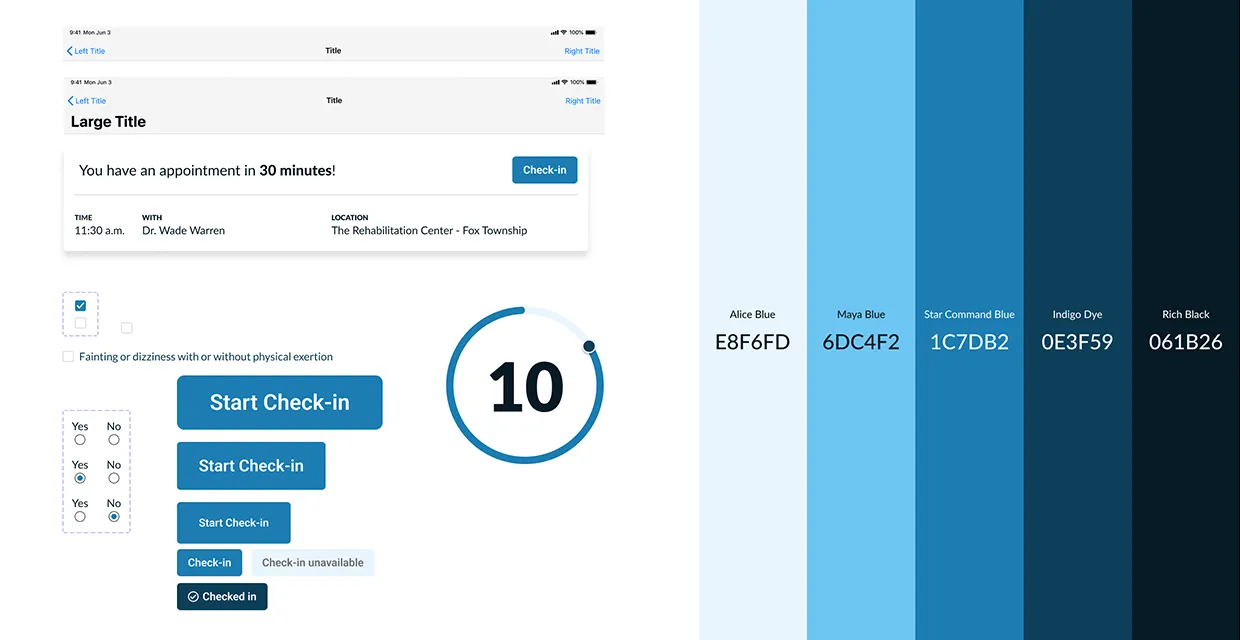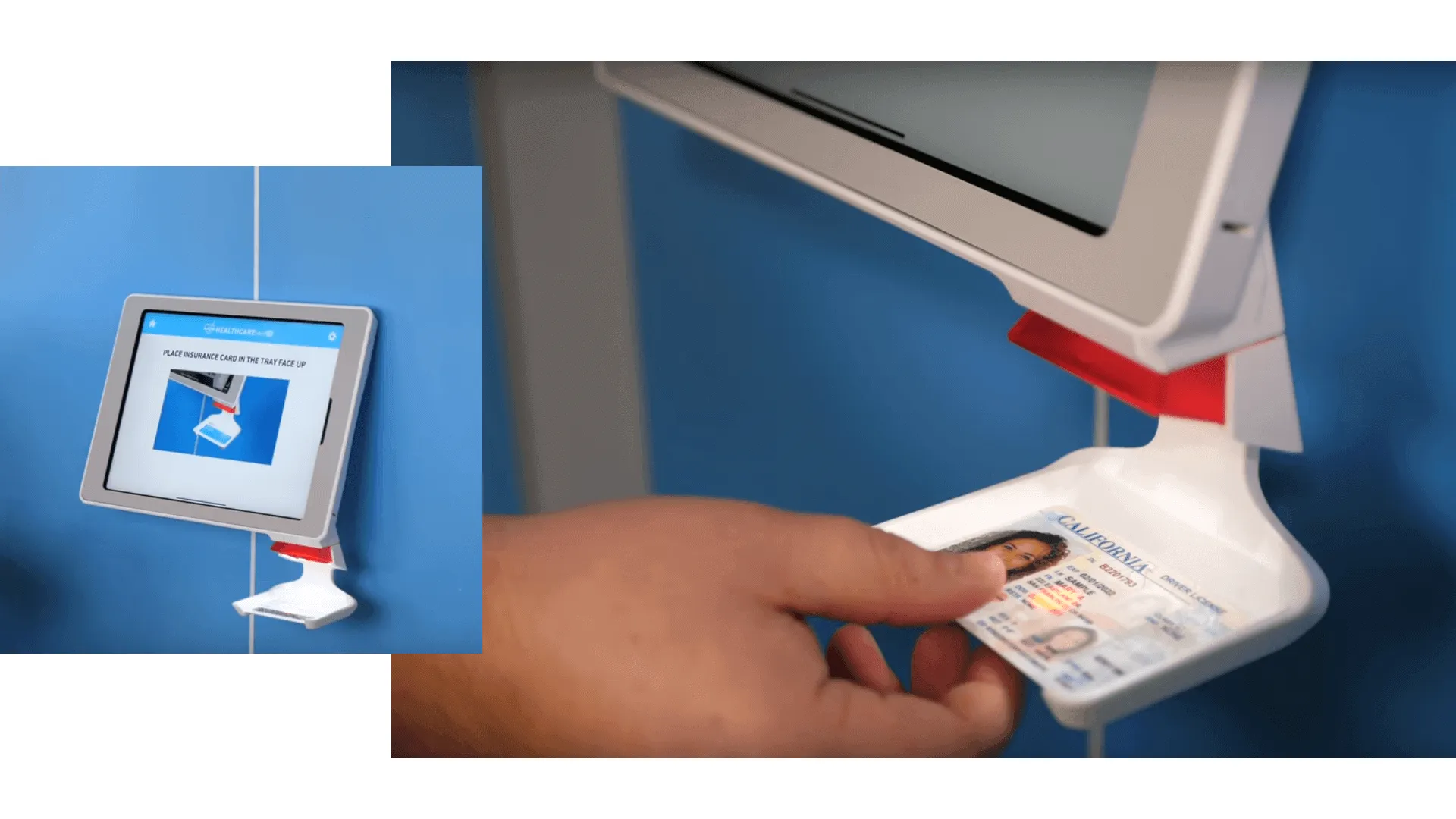SymphonyCare
After identifying significant inefficiencies and frustrations in traditional registration methods, our research revealed that a self-service digital solution could dramatically reduce wait times and errors, that addresses the core pain points of both healthcare providers and patients.
Background
Medical facilities often face challenges with patient check-in processes, leading to long wait times and inefficiencies. Traditional methods involving receptionists can create bottlenecks, especially during peak hours or in busy practices. This not only frustrates patients but also puts unnecessary strain on staff resources.
Problem
The current patient check-in process is time-consuming and inefficient, causing delays in appointments and creating a poor first impression for patients. Manual data entry by receptionists is prone to errors and takes valuable time that could be better spent on other patient care activities.
Need
Medical facilities require a fast, accurate, and user-friendly check-in system that reduces wait times, minimizes errors, and improves overall patient experience. The solution should streamline the process of collecting and verifying patient information, including identification and insurance details.
Solution
An iPad kiosk app for patient self-check-in addresses these issues by allowing patients to quickly and independently complete the check-in process. By incorporating features such as ID and insurance card scanning, the app significantly reduces processing time and improves data accuracy. This technology-driven approach aligns with the facility's goals of enhancing patient satisfaction and operational efficiency, ultimately leading to a smoother, more pleasant healthcare experience for both patients and staff.
Conclusion
The app is currently in development, however once deployed, SymphonyCare and patients alike should see the following positive results
- Reduced wait times: The app could significantly decrease the average check-in time from around 10 minutes to potentially under 3 minutes for new patients. A 66% or higher decrease!
- Improved data accuracy: By using features like ID and insurance card scanning, the app should minimize manual data entry errors.
- Increased patient satisfaction: A faster, more efficient check-in process is likely to improve patients' first impressions and overall experience.
- Enhanced staff productivity: With patients handling their own check-in, staff can focus on more meaningful tasks and patient care activities.
- Streamlined insurance verification: The app could potentially verify patients’ insurance eligibility before check-in is completed, reducing billing issues later.
- Reduced front desk congestion: Self-service kiosks can help manage patient flow more effectively, especially during peak hours.
- Improved payment collection: Integrated payment features could allow patients to pay outstanding balances or co-pays during check-in.
- Better resource allocation: With staff freed from manual check-in tasks, medical facilities can potentially reallocate resources to improve other aspects of patient care.
- Enhanced data collection: The app could potentially gather more comprehensive and accurate patient information, improving overall healthcare delivery.
- Increased operational efficiency: By automating much of the check-in process, the overall efficiency of the medical facility should improve.



